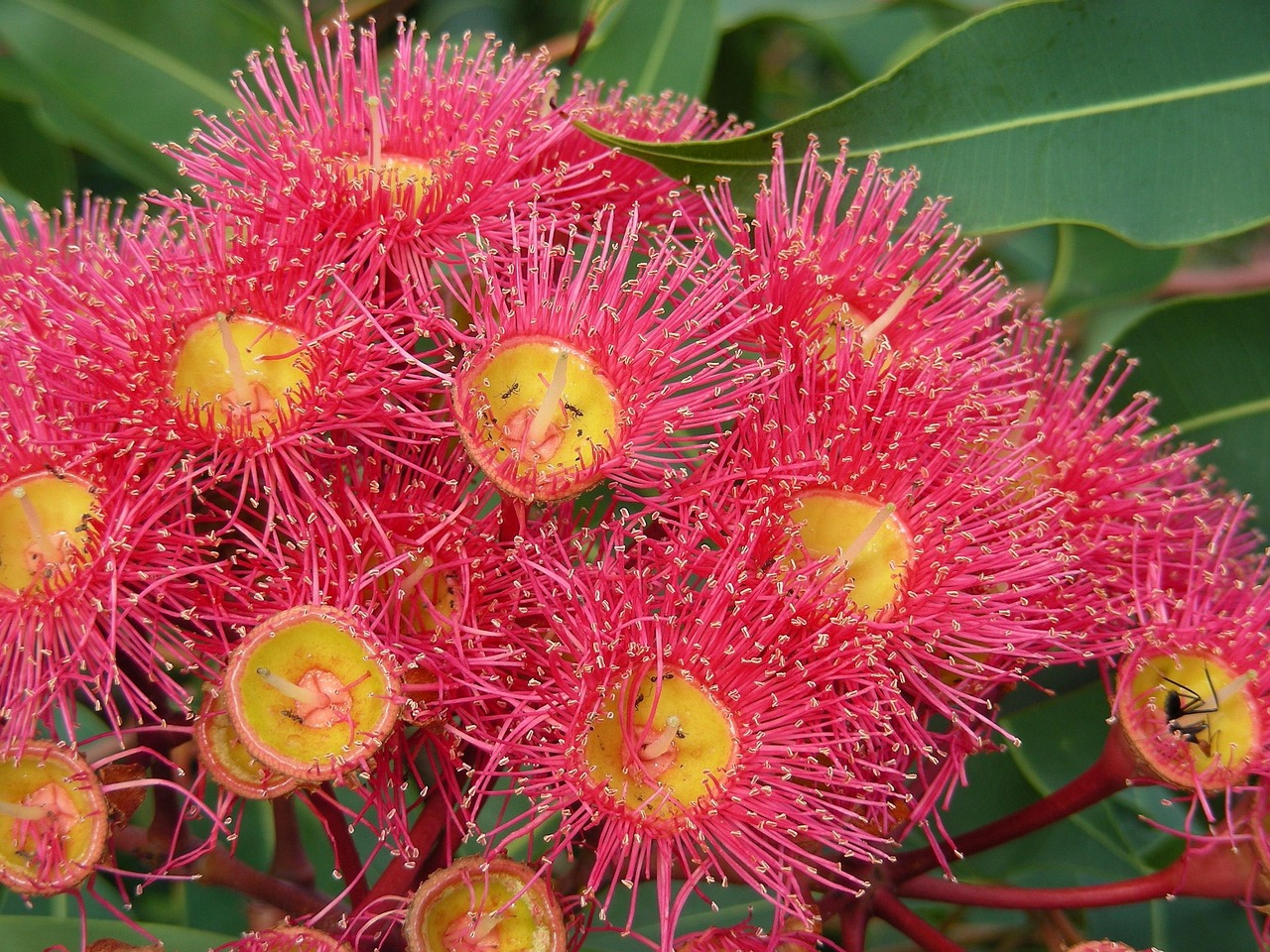The black gum tree (Nyssa sylvatica) typically exhibits a moderate growth rate in swampy environments, averaging about 12 to 24 inches per year under optimal conditions. Factors such as soil saturation, nutrient availability, and competition with other vegetation can influence this rate significantly.
Understanding the Black Gum Tree
The black gum tree, also known as Nyssa sylvatica, is a deciduous hardwood native to the eastern United States. It thrives in various habitats, including moist forests, swamps, and wetlands. This tree is well-known for its striking fall foliage, which can display vibrant shades of red, orange, and yellow. In addition to its aesthetic appeal, the black gum tree plays a crucial role in its ecosystem by providing habitat and food for wildlife.

Black gum trees are commonly found in areas with high moisture levels, which makes them particularly suited for swampy environments. These trees have adapted to wet conditions, developing traits that allow them to thrive where other species might struggle. Understanding their growth rate in these specific habitats is essential for conservation efforts and land management strategies.
Growth Rate Factors
The growth rate of black gum trees in swampy environments can be influenced by several key factors. These include soil conditions, water availability, light exposure, and competition with other plants. Each factor plays a role in determining how quickly a tree can grow and reach maturity.
- Soil Conditions: Black gum trees prefer well-drained soils rich in organic matter. In swampy environments, the soil can be saturated with water, which affects root development and nutrient absorption.
- Water Availability: While black gum trees thrive in wet conditions, excessive water can lead to root rot. Balancing moisture levels is crucial for optimal growth.
- Light Exposure: Black gum trees grow best in partial shade to full sun. Insufficient light can slow their growth rate significantly.
- Competition: In swampy areas, competition from other species can affect growth. Trees that are overshadowed may grow more slowly than those with ample access to light.
Growth Rate Patterns
The black gum tree’s growth rate can vary based on its environment. Research indicates that in favorable swampy conditions, these trees can reach heights of 30 to 50 feet over several decades. Their growth is generally more pronounced during the early years of life.

The following table summarizes the average growth rates of black gum trees based on different environmental conditions:
| Condition | Average Growth Rate (inches/year) | Height After 10 Years (feet) |
|---|---|---|
| Optimal Swampy Environment | 12-24 | 10-20 |
| Moderate Moisture | 8-12 | 5-10 |
| Dry Soil Conditions | 4-8 | 3-6 |
In optimal swampy environments, black gum trees can grow rapidly due to the abundant moisture and nutrient availability. However, variations in local conditions can lead to significant differences in growth rates across different regions. Trees planted in drier soils or areas with high competition may experience stunted growth compared to those thriving in ideal swampy settings.
Importance of Growth Rate Knowledge
Understanding the growth rate of black gum trees in swampy environments is crucial for several reasons. For land managers and conservationists, this knowledge helps in planning restoration projects and ensuring the right species are planted in suitable locations. Additionally, recognizing how these trees adapt to their environment provides insights into their ecological role and importance.

Monitoring the growth rates of black gum trees can also serve as an indicator of wetland health. Changes in growth patterns may signal shifts in environmental conditions or the impacts of climate change on these vital ecosystems.
Ecological Benefits of Black Gum Trees
Black gum trees contribute significantly to their ecosystems, particularly in swampy environments. Their ecological benefits extend beyond their aesthetic value. These trees provide habitat, improve soil health, and enhance water quality.
Habitat for Wildlife
Black gum trees serve as vital habitats for various species. Their dense foliage and strong branches create shelter and nesting sites for birds and small mammals. Additionally, the trees produce fruits that attract wildlife.
- Birds: Species such as woodpeckers, thrushes, and warblers rely on black gum trees for food and nesting.
- Mammals: Squirrels and raccoons often forage on the fruits and leaves.
- Insects: The flowers of black gum trees are a source of nectar for pollinators like bees and butterflies.
Soil Health Improvement
The presence of black gum trees enhances soil quality in swampy areas. Their root systems help stabilize the soil, reducing erosion and promoting nutrient cycling. The decomposition of fallen leaves adds organic matter, enriching the soil further.

Nutrient Cycling
Black gum trees play a role in nutrient cycling through their leaf litter. As leaves decompose, they release essential nutrients back into the soil, benefiting other plants in the vicinity. This process is crucial in swampy environments, where nutrient availability can be variable.
| Nutrient | Source | Benefit |
|---|---|---|
| Nitrogen | Decomposed leaves | Promotes plant growth and health |
| Phosphorus | Organic matter breakdown | Supports root development and flowering |
| Potassium | Leaf litter and soil organisms | Aids in overall plant health and disease resistance |
Adaptations to Swampy Environments
The black gum tree has developed several adaptations that enable it to thrive in swampy conditions. These adaptations ensure the tree’s survival while contributing to the local ecosystem.
Aerial Roots and Buttressing
One significant adaptation of black gum trees is the development of aerial roots and buttresses. These structures help support the tree in unstable, saturated soils. Aerial roots can absorb oxygen directly from the air, which is vital in waterlogged conditions where soil oxygen levels are low.
Water Tolerance
Black gum trees exhibit a high tolerance for flooding. They can withstand prolonged periods of inundation without suffering damage. This characteristic allows them to occupy niches where many other species cannot survive.
Cultural Significance of Black Gum Trees
The black gum tree holds cultural significance among various communities, particularly Indigenous peoples. Traditionally, these trees have been used for medicinal purposes and as a source of food.
Medicinal Uses
The bark and leaves of black gum trees have been utilized in traditional medicine. Various ailments were treated using different parts of the tree. Some common uses include:
- Anti-inflammatory: Infusions made from the bark were used to alleviate swelling.
- Astringent: The leaves were employed in poultices for skin irritations.
- Digestive Aid: Decoctions from the fruit were consumed to aid digestion.
Food Source
The fruit of the black gum tree is edible and has been consumed by both humans and wildlife. They are small, round drupes that ripen in late summer to early fall. The sweet flavor attracts various animals, which play a role in seed dispersal.
Challenges to Black Gum Tree Growth
Despite their resilience, black gum trees face several challenges that can impact their growth rates and overall health. These challenges may arise from environmental factors, human activities, or pests and diseases.
Environmental Changes
Climate change poses a significant threat to black gum trees. Altered precipitation patterns and increased temperatures can affect their growth rates. Prolonged drought periods can lead to stress and reduced vitality.
Pests and Diseases
Black gum trees are susceptible to various pests and diseases that can hinder their growth. Common threats include:
- Borer Insects: These insects can damage the tree’s structure by tunneling through the wood.
- Fungal Infections: Diseases such as leaf spot can reduce photosynthesis efficiency, impacting growth.
- Environmental Stressors: Pollution and invasive species can also negatively affect tree health.
Addressing these challenges requires careful management strategies to ensure the sustainability and growth of black gum trees in their native habitats.
Best Practices for Cultivating Black Gum Trees
To ensure the successful growth of black gum trees in swampy environments, it is essential to adopt best practices in cultivation and management. These practices focus on creating optimal conditions for growth while minimizing stressors that could hinder development.
Site Selection and Preparation
The first step in cultivating black gum trees is selecting an appropriate site. Ideal locations should have ample moisture, good drainage, and minimal competition from invasive species.
- Soil Testing: Conduct soil tests to determine pH levels and nutrient content. Black gum trees prefer slightly acidic to neutral soil (pH 5.0 to 7.0).
- Drainage Improvement: While black gum trees can tolerate wet conditions, improving drainage in overly saturated areas can promote healthier root systems.
- Vegetation Control: Remove invasive plant species that may compete for resources. This can be done through manual removal or targeted herbicide application.
Planting Techniques
Proper planting techniques are crucial for the establishment of black gum trees. These trees should be planted during their dormant season, typically in early spring or late fall.
- Select Healthy Seedlings: Choose disease-free seedlings with a strong root system.
- Digging the Hole: Prepare a hole that is at least twice the width of the root ball and as deep as the root ball itself.
- Watering: Water the seedlings thoroughly after planting to eliminate air pockets and ensure good soil contact.
- Mulching: Apply a layer of mulch around the base of the tree to retain moisture and suppress weeds.
Water Management Practices
Effective water management is vital for the health of black gum trees, especially in swampy environments. While these trees thrive in moist conditions, maintaining appropriate moisture levels is essential.
Irrigation Strategies
In areas where rainfall is inconsistent, establishing an irrigation plan can help maintain adequate moisture levels. Consider the following strategies:
- Drip Irrigation: This method allows for precise water delivery directly to the roots, reducing water waste and preventing root rot.
- Soil Moisture Monitoring: Use moisture sensors to monitor soil conditions and adjust irrigation accordingly.
- Rainwater Harvesting: Implement systems to collect rainwater for irrigation purposes, which can be beneficial during dry spells.
Flood Management
In swampy areas prone to flooding, it is crucial to implement flood management strategies to protect young black gum trees:
- Create Elevated Planting Beds: Elevate planting areas to prevent water from pooling around the root zone during floods.
- Install Drainage Systems: Utilize French drains or ditches to redirect excess water away from the trees.
- Monitor Flood Levels: Regularly check water levels during heavy rains to ensure trees are not submerged for extended periods.
Pest and Disease Management
Effective pest and disease management is essential for promoting healthy growth in black gum trees. Integrated pest management (IPM) strategies can help mitigate risks associated with pests and diseases.
Pest Control Measures
The following measures can be taken to prevent pest infestations:
- Regular Inspections: Conduct routine checks for signs of pests such as boreholes or unusual leaf damage.
- Natural Predators: Encourage beneficial insects like ladybugs and lacewings that prey on harmful pests.
- Pesticide Application: If necessary, apply environmentally friendly pesticides following guidelines to minimize harm to non-target organisms.
Disease Prevention Strategies
Preventing diseases is equally important in maintaining the health of black gum trees. Consider these strategies:
- Proper Pruning: Remove dead or diseased branches to improve air circulation and reduce disease spread.
- Avoid Overcrowding: Ensure adequate spacing between trees to reduce competition and improve airflow.
- Soil Health Maintenance: Use organic amendments to enhance soil health, supporting stronger tree growth and resilience against diseases.
Monitoring Growth and Health
Monitoring the growth and overall health of black gum trees is essential for long-term success. Regular assessments can help identify issues early and inform management decisions.
Growth Tracking Methods
<pUtilize various methods to track the growth of black gum trees effectively:
- Measuring Height: Measure tree height annually to assess growth rates over time.
- Dendrochronology: Study tree rings if necessary, to understand growth patterns and environmental responses.
- Health Assessments: Assess foliage color, density, and overall vigor as indicators of tree health.
This ongoing monitoring will help ensure that black gum trees thrive in their native swampy habitats while contributing positively to their ecosystems.
Challenges and Future Considerations
As the black gum tree continues to play a vital role in swampy environments, it is essential to consider the future challenges it may face. These trees are not only significant for their ecological contributions but also for their cultural importance. However, ongoing environmental changes and human activities pose threats that need to be addressed.
Climate Change Impacts
Climate change presents one of the most significant challenges for black gum trees. Alterations in temperature and precipitation patterns can directly affect growth rates and overall tree health. Increased frequency and intensity of storms can lead to flooding, while prolonged droughts may cause stress.
- Flooding Risks: While black gum trees can tolerate wet conditions, excessive flooding can damage roots and lead to disease.
- Drought Vulnerability: Prolonged dry periods can weaken trees, making them susceptible to pests and diseases.
- Temperature Extremes: Higher temperatures can disrupt the growing season and affect flowering and fruiting patterns.
Urban Development Pressures
Urban expansion and land development often encroach on natural habitats. This growth can lead to habitat loss, increased pollution, and competition from non-native species. Protecting black gum trees in these areas requires careful planning and management strategies.
- Habitat Preservation: Conservation efforts should focus on protecting existing black gum tree populations and their habitats from development.
- Reforestation Initiatives: Replanting efforts can help restore lost habitats and ensure the sustainability of these important trees.
- Community Engagement: Involving local communities in conservation efforts can foster a greater appreciation for black gum trees and their ecological roles.
Research and Education
Ongoing research into the growth dynamics of black gum trees in swampy environments is essential for informed management decisions. Future studies should focus on understanding how climate change affects their growth rates, health, and interactions with other species.
Education and Awareness Programs
Raising awareness about the ecological importance of black gum trees can encourage conservation efforts. Educational programs targeting schools, local communities, and land managers can help disseminate knowledge about these trees and their benefits.
- Workshops: Organize workshops focusing on the cultivation and care of black gum trees.
- Guided Tours: Conduct educational tours in preserves or parks where black gum trees are prominent, highlighting their ecological significance.
- Online Resources: Develop online platforms that provide information on best practices for planting and maintaining black gum trees.
Final Thoughts
The black gum tree plays a crucial role in swampy ecosystems, providing essential habitat, improving soil health, and contributing to biodiversity. Understanding its growth rates and requirements is vital for successful cultivation and management in changing environments.
As we face the challenges posed by climate change, urban development, and pest pressures, proactive measures are necessary to protect these valuable trees. By implementing best practices for planting, monitoring health, and engaging communities in conservation efforts, we can ensure that black gum trees continue to thrive for generations to come.
In conclusion, the black gum tree (Nyssa sylvatica) serves as a testament to nature’s resilience and adaptability. Its growth in swampy environments not only enhances the landscape but also supports a rich variety of wildlife. By prioritizing their preservation, we honor the ecological balance they help maintain and the beauty they bring to our natural world.
